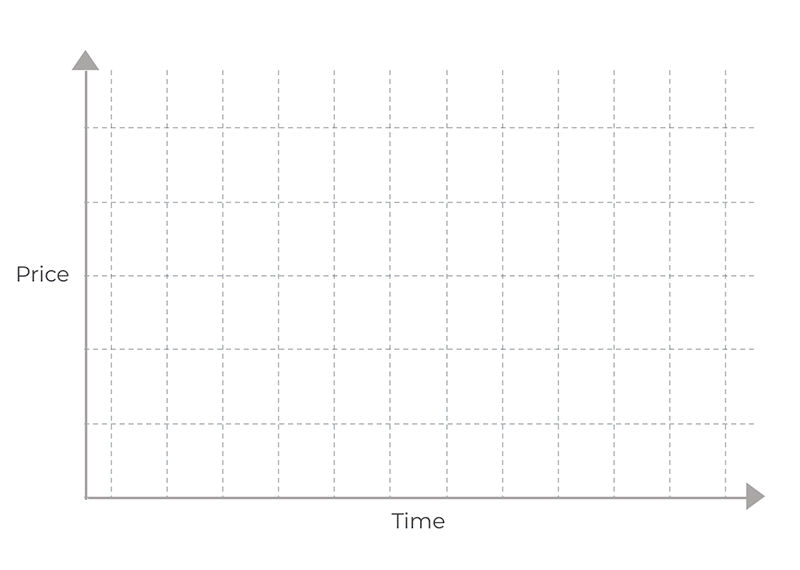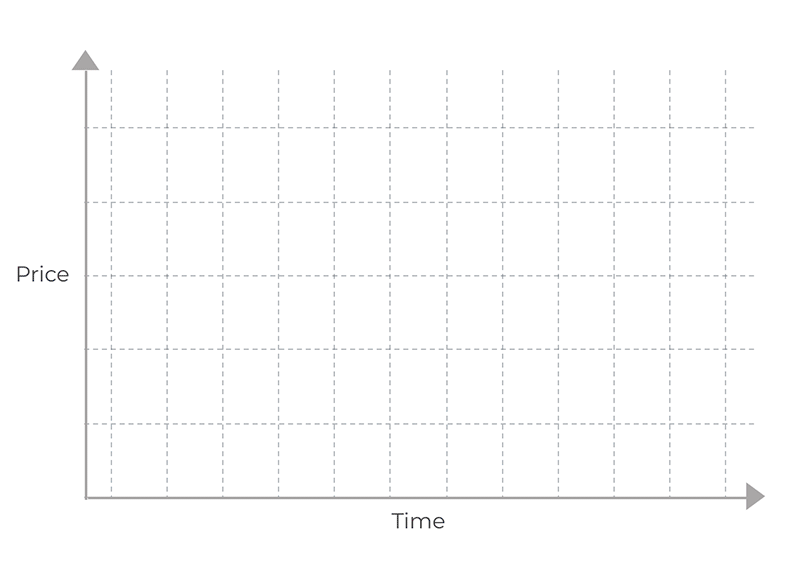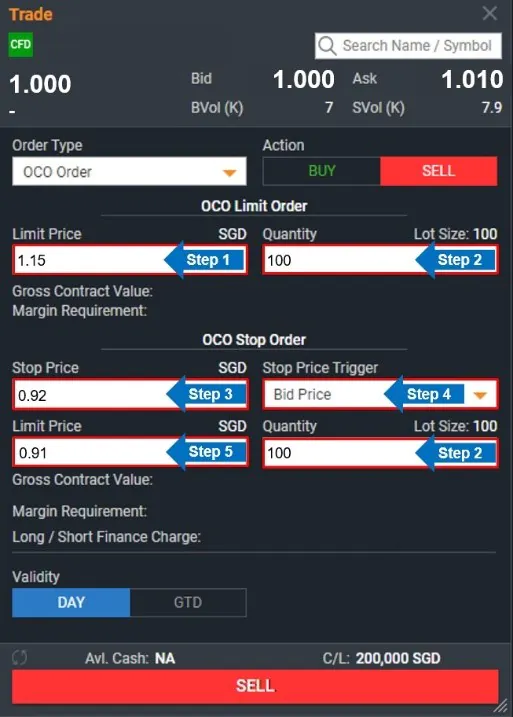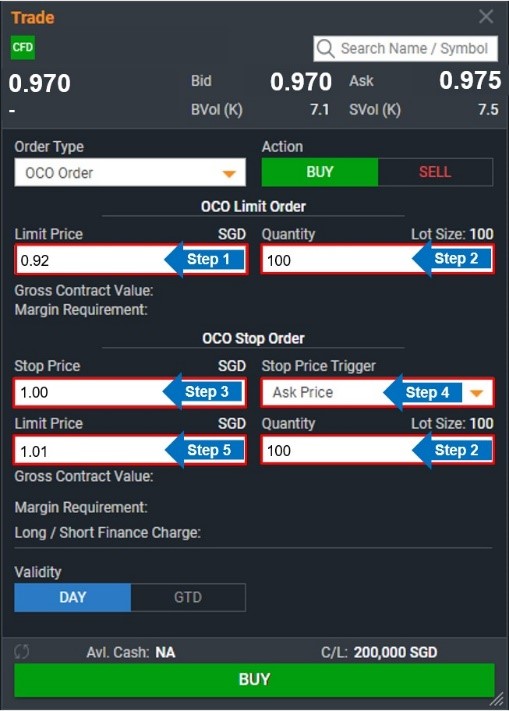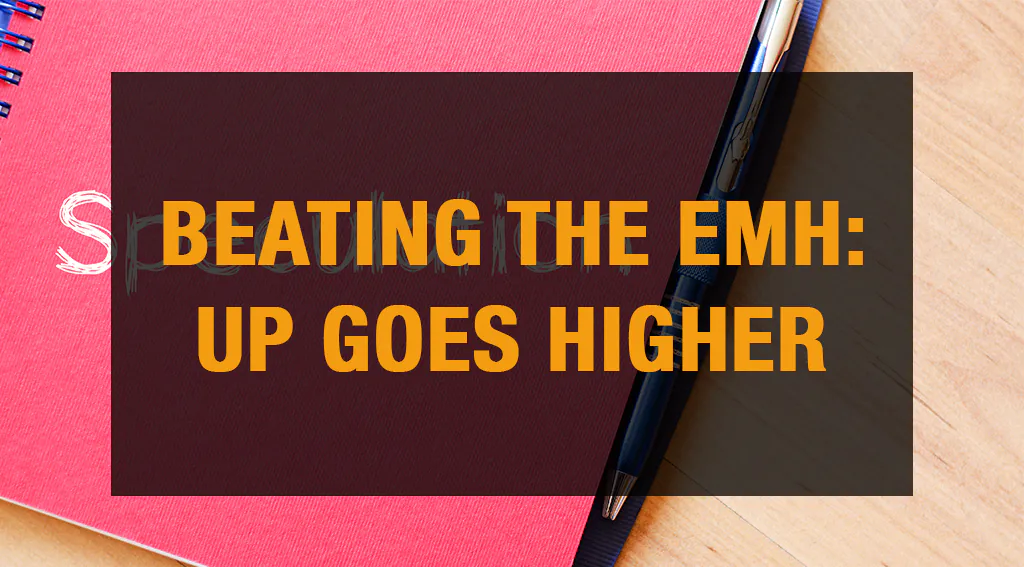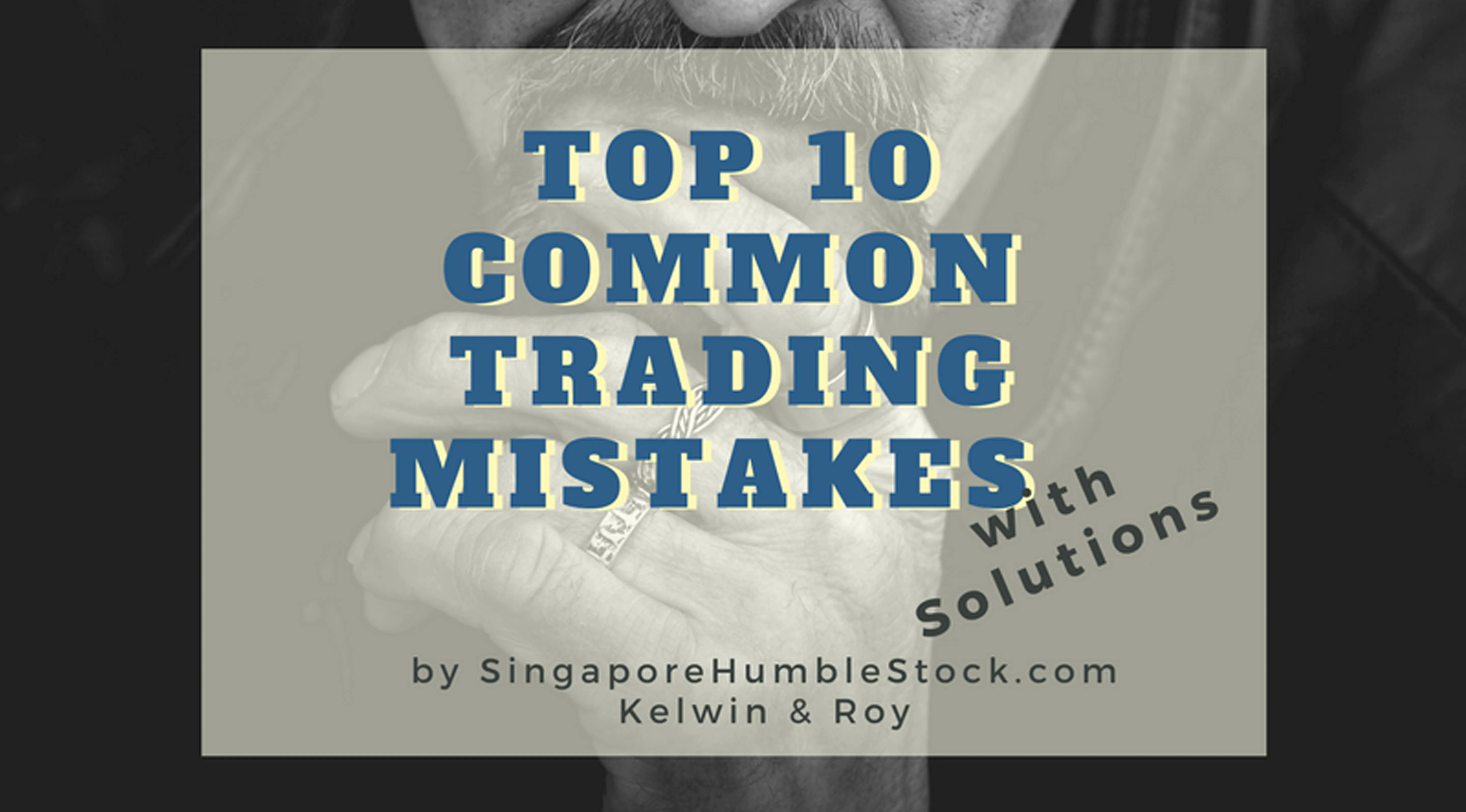Top 3 Reasons to use OCO Orders!
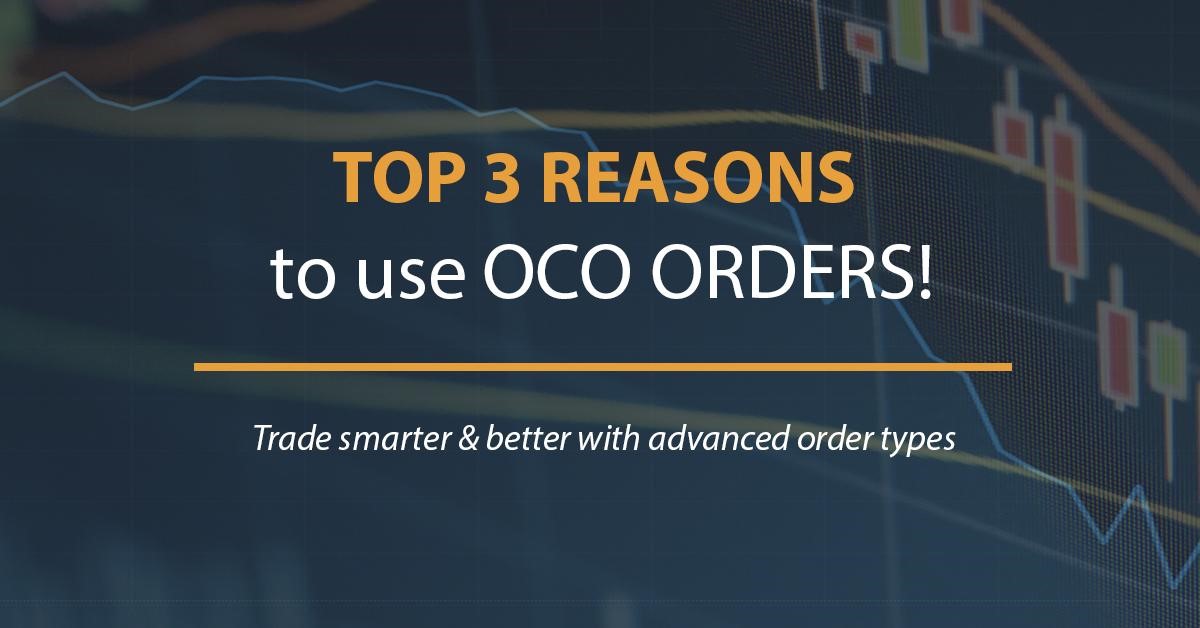
Published On: 29 May 2020 | 5:00 PM
Lee Yong Shern, CFD Dealer
Yong Shern is a passionate CFD dealer who has always aspired to discover trading opportunities via a blend of different research methodologies. Prior to joining PhillipCapital, Yong Shern was an intraday equity trader in one of the top broker firm in Malaysia. He graduated with First Class Honours in Business Administration with a major in Banking and Finance from the University of Malaya. Yong Shern is experienced in both trading and research in various financial products. These products include equities, indices, commodities, forex trading. He has successfully crafted trading strategies to navigate this volatile oil environment.
In his free time, Yong Shern enjoys following the latest market news with the aim of helping clients navigate through various market conditions.
As a CFD trader, have you ever experienced the need for an order type that sets two orders concurrently, one to take profit and the other to cut loss, and the order gets cancelled when the other is filled?
Do you wish for a risk management tool that can help you to manage your trading exit strategies?
The good news is that you can do both through One-Cancels-the-Other (OCO) orders!
Definition of an OCO Order
In an OCO order, a set of two instructions is given to fill orders:
1. At the price you want (better off) or
2. Once it reaches a certain target (worse off) price
When the limit order is triggered, the stop limit order will be cancelled automatically. If the stop price is reached, the stop limit order will be triggered or filled and the limit order will be cancelled.
An OCO order requires the user to set 3 different prices:
i) limit price (take profit)
ii) stop price
iii) stop limit price (cut loss)
To illustrate, here are 2 different scenarios for OCO orders.
Scenario 1: CFD price moves in your favour (better off)
In the first scenario, you purchase your shares at an entry price of S$1.00. You set your limit price at S$1.15 and your stop limit price is set at S$0.95. The limit order is triggered when the share price hits S$1.15 and the stop limit order is cancelled automatically.
Scenario 2: CFD price moves against you (worse off)
In the second scenario, the stop limit order is triggered when the share price drops to S$0.95 and the limit order is cancelled automatically.
Top 3 Benefits of using an OCO Order
1. Risk-Reward Customization
OCO orders allow you to customise your risk-reward ratio. Risk-reward ratio is defined as the relationship ratio between your potential rewards and risk taken.
With a pre-determined risk-reward ratio, you are able to determine the exit points for both your pre-determined take profit and cut loss points. OCO orders allow you to set your exit points during your trade execution.
Below is an example of an OCO order application by a fictional person called “Ms. A” who anticipates the potential drop in Straits Times Index due to COVID-19 and decides to short sell with CFD to capture the downside return.
| Shares | XYZ |
| Quantity | 10,000 |
| Entry Price | S$1.00 |
| Target Price (Limit Price) | S$1.15 |
| Stop Price | S$0.95 |
| Stop Limit Price | S$0.95 |
(Assumption: No commission and finance charges involved)
To maximise gains and minimise losses, Ms. A adopts the risk-reward ratio of 1:2, a maximum loss of S$250 and a gain of S$500, which is equivalent to 50 index points of loss or 100 index points of gain in each unit of Straits Times Index SGD5 CFD.
| Scenario 1: The share price went down to S$0.95 | Scenario 2: The share price went up to S$1.15 | |
| Original Investment | Long XYZ CFD
S$1,000 |
Long XYZ CFD
S$1,000 |
| Quantity (shares) | 10,000 | 10,000 |
| Entry Price | S$1.00 | S$1.00 |
| Profit/(Loss) | 10,000 * (0.95-1.00)= -S$500 | 10,000 * (1.15-1.00)= S$1,500 |
| Risk-reward ratio | 1 | 3 |
Potential Scenarios
By sticking to her risk-reward ratio of 1:2, Ms. A risks S$250 for a profit of S$500. However, do note that if the index gaps up or down, Ms. A’s orders may not be filled.
You may refer to our previous article to understand more about stop limit orders.
2. Protect Profit
Holding a short position that is deep in the money? You should utilise an OCO order to maximise your profit and set a minimum profit in the event of trend reversal. This ensures your winning position will be protected as you stay in the trading game. You can do so by setting the limit order price as your profit target and using the stop limit order (minimum profit) to protect your accumulated gains.
3. Minimal monitoring
Having too many meetings on a work day? Have family commitments and kids to look after? Can’t be on the trading screen 24/7? Not to worry!
Regardless of which trading strategy you choose to deploy, you can semi-autopilot it by utilising OCO Day or OCO GTD* order anytime. You can pre determine your take profit and cut loss points without manual interference and monitoring.
*Please note that OTO GTD orders are only available for Singapore Equity CFD & CFD DMA.
How do I place an OCO Order?
With an existing long position (Take Profit or Cut Loss)
Submitting an OCO Order (Having an existing long position)
Steps to submit an OCO Order:
Log into POEMS 2.0 or Poems Mobile → Trade → Select CFD Counter
Step 1: Submit your sell limit order above the market price to take profit (better off)
Step 2: Change the quantity
Step 3: Identify your stop sell price
Step 4: Choose to trigger based on either bid or ask
Step 5: Enter stop sell limit price (worse off)
With an existing short position (Take Profit or Cut Loss)
Submitting an OCO Order (Have an existing short position)
Steps to submit an OCO Order:
Log into POEMS 2.0 or Poems Mobile → Trade → Select CFD Counter
Step 1: Submit your buy limit order below the market price to take profit (better off)
Step 2: Change the quantity
Step 3: Identify stop buy price
Step 4: Choose to trigger based on either bid or ask
Step 5: Enter stop buy limit price (worse off)
Please note that such order types may not be available for certain CFD products and markets.
Conclusion
“Always start at the end before you begin. Professional investors always have an exit strategy before they invest. Knowing your exit strategy is an important investment fundamental.”
– Robert Kiyosaki.
Sound risk management, such as cutting losses early and cashing on your wins, is an essential component of your trading journey. OCO orders allow you to customise your risk reward ratio by allowing you to determine your take profit and cut loss points as well as protecting your long-accumulated gains. OCO orders are one of advanced tools provided by us to aid you in your trading journey.
If you are interested in knowing more about CFDs, please join our FREE education seminars/webinars and listen to our past webinar recordings.
Submit OCO orders via both POEMS 2.0, POEMS Mobile 2.0 and POEMS Pro now!
Begin your Trading Journey with us!
More Articles
Understanding Contracts for Difference (CFD)
“What is CFD?” might be a question that has popped up into the minds of those that just recently got acquainted with the concept of investments.
Beating the Efficient Market Hypothesis
If you have any sort of finance background, you will probably have heard of the Efficient Market Hypothesis (EMH). It’s an economic theory that states that all available information are reflected in the prices..
Top 10 common trading mistakes [with solutions!]
Stay tuned as we list out the Top 10 trading mistakes which we observed from our clients. Why this is so important? Because such events will happen again and Will YOU be able to benefit from it?
Disclaimer
This material is provided to you for general information only and does not constitute a recommendation, an offer or solicitation to buy or sell the investment product mentioned. It does not have any regard to your specific investment objectives, financial situation or any of your particular needs. Accordingly, no warranty whatsoever is given and not liability whatsoever is accepted for any loss arising whether directly or indirectly as a result of your acting based on this information.
Investments are subject to investment risks. The risk of loss in leveraged trading can be substantial. You may sustain losses in excess of your initial funds and may be called upon to deposit additional margin funds at short notice. If the required funds are not provided within the prescribed time, your positions may be liquidated. The resulting deficits in your account are subject to penalty charges. The value of investments denominated in foreign currencies may diminish or increase due to changes in the rates of exchange. You should also be aware of the commissions and finance costs involved in trading leveraged products. This product may not be suitable for clients whose investment objective is preservation of capital and/or whose risk tolerance is low. Clients are advised to understand the nature and risks involved in margin trading.
You may wish to obtain advice from a qualified financial adviser, pursuant to a separate engagement, before making a commitment to purchase any of the investment products mentioned herein. In the event that you choose not to obtain advice from a qualified financial adviser, you should assess and consider whether the investment product is suitable for you before proceeding to invest and we do not offer any advice in this regard unless mandated to do so by way of a separate engagement. You are advised to read the trading account Terms & Conditions and Risk Disclosure Statement (available online at www.poems.com.sg) before trading in this product.
Any CFD offered is not approved or endorsed by the issuer or originator of the underlying securities and the issuer or originator is not privy to the CFD contract. This advertisement has not been reviewed by the Monetary Authority of Singapore (MAS).





